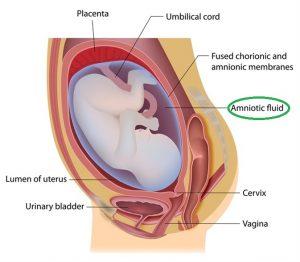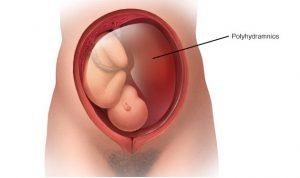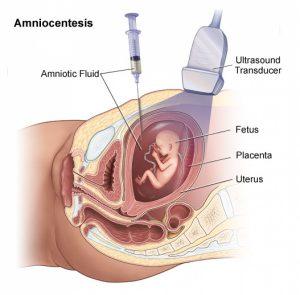Research
Amniotic fluids and how they affect your pregnancy
WHAT IS AMNIOTIC FLUID? HOW DOES IT AFFECT MY PREGNANCY?
Congratulations on your new bundle of joy! As a new mother to be, it is important to know what’s happening in your body during your pregnancy.
So what is it?
When the baby is first conceived, it is located within the amniotic sac. Within 12 days after conceiving the baby, the amniotic fluid is formed inside the sac.[8] When mothers go into labour their ‘water’ may break, this ‘water’ is actually the amniotic fluid.
So why not call it water?
Amniotic fluid isn’t just any water, it is a clear white, slightly yellowish fluid that surrounds the uterus within the amniotic sac during your pregnancy.[2] Initially, the amniotic fluid is made up mostly of water produced by the mother. Around the 20 week gestation period, the water is replaced by the baby’s urine.[1] The fluid contains nutrients and hormones needed for the baby’s growth and development in the womb. In your later gestation period between the second and third trimester, nutrients such as lipids, peptides, carbohydrates and hormones mixes with 98% of the water.[13]

What does the amniotic fluid do for the baby?
The amniotic fluid has many functions that contribute to the baby’s growth and development. The main function of the amniotic fluid is protection of the baby. The fluid acts as a cushion for incoming external impacts and also to fight infections.[1] Similarly, it also plays a role in insulation by keeping the baby’s temperature steady.[1] The fluid plays a large role in developing and growing the baby’s lungs, muscles and bones.[1] When the baby is in the sac, they swallow the fluids and pass it through as urine which this process assists with the development of the digestive system.[9] Did you know that the baby can taste and smell what you eat during your pregnancy? This is because the flavour molecules travels through the placenta into the amniotic fluid.

How do I know how much amniotic fluid is in the sac?
During your 20 week ultrasound, also known as the Morphology scan, your medical specialist will be able to assess the amount of fluid that is in the amniotic sac.[7]
Does the amount of amniotic fluid in the sac matter?
Around 34 weeks is when the amniotic sac contains the most fluid during the pregnancy, averaging 800 mL.[2] When the baby is full term at 40 weeks, there is approximately 600 mL of amniotic fluid.[2] Conditions regarding the amount of amniotic fluid is known as polyhydramnios and oligohydramnios.
Polyhydramnios:
The National Health Service (2020) states that having too much amniotic fluid in the sac is known as polyhydramnios.[4] (Figure 1) . This may occur if the baby in the womb does not swallow and absorb the fluid in normal amounts. The common causes of polyhydramnios includes baby’s health problems involving the gastrointestinal or central nervous system, fetal anaemia where the baby is lacking red blood cells and hydrops fetalis which is the abnormal amount of fluid in the baby.[3] Complications that can arise from this condition can include mothers going into labour early, the baby developing too quickly, the placenta detaching from the uterus or wrong positioning of the baby.[10]

Oligohydramnios:
On the other hand, a sac with low amniotic fluid is known as oligohydramnios.[5] This is associated with complications between the mother and baby. Oligohydramnios may be caused due to poor fetal growth, maternal health issues and post term pregnancy.[6] Some of the risks associated with this condition may include the underdevelopment of the baby’s muscles, limbs, lungs and digestive system as well as preterm birth and labour complications.[11]

What are the treatment options for these amniotic conditions?
If you are diagnosed with polyhydramnios, treatment varies on how severe the condition is. If the case is mild, your doctor/ specialist may schedule additional appointments to check on the baby’s size.[10] If the size and the condition of the baby is more severe, your doctor/specialist will have treatment plans such as medication that controls the baby’s urine, bedrest, draining amniotic fluid or inducing labour.[10]
The treatment for oligohydramnios is dependent on the gestational age. According to the American Pregnancy Association (2019) if you are not full term yet, your doctor/specialist will run tests and monitor the baby’s activity closely [11]. If you are close to full term, it is recommended that early delivery will be the safest for both you and the baby.[11] Another treatment option is amniocentesis which is an injection of fluid before the delivery (Figure 2).
What happens if my amniotic fluid is leaking?
Throughout the pregnancy, you may have leakage. Not all leakage is considered as the amniotic fluid but can also be urine or vaginal fluid.[12] If the fluid is clear, white with mucus or blood that is odourless therefore is amniotic fluid.[12] Normally urine will have an odor and vaginal fluid is white or yellow.[12]
Depending on the gestation age, the risks associated with fluid leakage can vary. If there is leakage during the first or second trimester this may lead to a miscarriage, premature birth or still births. Leakage present during the third trimester may cause difficulties during labour or result in a cesarean birth.[12] Please contact your health provider if this does occur to receive advice for suitable treatments.
So, how do I maintain amniotic fluid?
Well, it is important for you to ensure that you don’t have too much or too little amniotic fluid. By drinking at least 8 to 10 glasses of water daily will help to preserve and increase your low levels of amniotic fluids (URL of Lisa’s blog). When it comes to your diet, you should be eating more of foods that have high water content which helps regulate your fluid levels.[19] [Figure 3] However, there are certain things you should avoid consuming. Avoid consuming herbal supplements that make you go to the bathroom often as this will lead to dehydration.[19] Also stay away from drinking alcohol as this can lower your amniotic fluid levels and can harm the baby’s health.[19]
It is recommended for you to do daily light exercises such as walking and yoga as this helps with the blood flow to the placenta and uterus.[19] Not only does this increases your amniotic fluid levels but also makes you feel better mentally and prepares your body for birth.

Disclaimer
This is a professional opinion and is based on the latest credible research. This is for general educational purposes only, so please seek professional medical advice from your personal practitioner.
References
[1] https://www.marchofdimes.org/pregnancy/amniotic-fluid.aspx
[2] https://medlineplus.gov/ency/article/002220.htm
[3] https://www.mayoclinic.org/diseases-conditions/polyhydramnios/symptoms-causes/syc-20368493
[4] https://www.nhs.uk/conditions/polyhydramnios/
[5] https://www.cedars-sinai.org/health-library/diseases-and-conditions/o/oligohydramnios.html
[6] https://www.marchofdimes.org/complications/oligohydramnios.aspx#
[7] https://www.mydr.com.au/tests-investigations/ultrasound
[8] https://www.medicalnewstoday.com/articles/307082
[9] https://study.com/academy/lesson/what-is-amniotic-fluid-levels-function-composition.html
[10] https://my.clevelandclinic.org/health/diseases/17852-polyhydramnios/management-and-treatment
[11] https://americanpregnancy.org/pregnancy-complications/oligohydramnios/
[12] https://www.healthline.com/health/pregnancy/leaking-amniotic-fluid#risk-factors
[13] https://www.ncbi.nlm.nih.gov/books/NBK541089/
[17] http://mkhadar106.blogspot.com/2018/09/polyhydramnios.html
[18] https://www.mypregnancybaby.com/chorionic-villus-sampling-cvs-risks-benefits/
[20] https://www.leadingnutrition.com.au/agedcarehydration/








